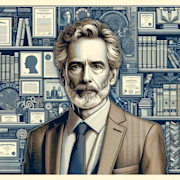Swann's Way by Marcel Proust

Marcel Proust’s Swann’s Way is the first volume of his monumental novel In Search of Lost Time. Published in 1913, this novel has since become a classic of French literature and is considered one of the greatest works of the 20th century. Let’s delve into the intricacies of Proust’s masterpiece and explore why it continues to captivate readers around the world.
The Narrator’s Journey
Swann’s Way is narrated by an unnamed protagonist who is reflecting on his childhood and early adulthood. The novel opens with the narrator’s memories of his childhood in the fictional town of Combray, where he recalls the enchanting experiences of his youth and the people who shaped his world. Through a series of introspective musings, the narrator explores themes of memory, time, love, and art.
Proust’s narrative style is often described as stream-of-consciousness, as the narrator delves into his thoughts and emotions with intricate detail. The novel is marked by its lyrical and introspective prose, with Proust’s vivid descriptions of the narrator’s innermost thoughts and feelings.
The Love Story of Swann and Odette
One of the central plotlines of Swann’s Way revolves around the love affair between Charles Swann, a wealthy Parisian socialite, and Odette de Crécy, a beautiful but enigmatic courtesan. Swann becomes infatuated with Odette, despite knowing that she is not faithful to him. Their tumultuous relationship is fraught with jealousy, betrayal, and heartbreak, as Swann grapples with his obsessive love for Odette.
Proust’s portrayal of Swann and Odette’s love story is a poignant exploration of the complexities of human relationships. Through their tumultuous affair, Proust delves into themes of desire, longing, and the elusive nature of love.
Themes of Time and Memory
Central to Swann’s Way is the theme of time and memory. The novel is framed by the narrator’s recollections of his past, as he seeks to make sense of his memories and experiences. Proust’s exploration of memory is intricately woven throughout the narrative, as the narrator reflects on the nature of time and the ways in which memories shape our understanding of the world.
Proust’s depiction of memory is both nostalgic and bittersweet, as the narrator grapples with the passage of time and the impermanence of life. Through his lyrical prose and evocative imagery, Proust captures the nuances of human memory with profound insight and sensitivity.
The Power of Art and Literature
Throughout Swann’s Way, Proust pays homage to the power of art and literature in shaping our perceptions of the world. The narrator’s love of reading and storytelling becomes a source of solace and inspiration, as he seeks to make sense of his own experiences through the works of great writers and artists.
Proust’s novel is replete with references to cultural icons and literary masterpieces, reflecting the narrator’s deep appreciation for the transformative power of art. Through his exploration of aesthetics and creativity, Proust invites readers to consider the ways in which art can enrich and illuminate our lives.
Conclusion
In Swann’s Way, Marcel Proust invites readers on a journey of introspection and self-discovery, as the narrator reflects on his past and grapples with the complexities of memory, love, and art. Through his exquisite prose and profound insights, Proust captures the beauty and fragility of human experience with unparalleled depth and sensitivity.
As readers navigate the labyrinthine depths of Proust’s narrative, they are drawn into a world of rich imagery, philosophical musings, and poignant reflections on the nature of consciousness and existence. Swann’s Way stands as a testament to Proust’s literary genius and continues to captivate readers with its timeless exploration of the human condition.

Johnathan Evans
Journalist
More From Classics Authority Books

Book
The Intriguing Works of Classic Russian Playwright Anton Chekhov

Book
The Voyage of the Dawn Treader by C.S. Lewis

Book
The Tale of Genji by Murasaki Shikibu

Book
From Wonderland to Reality: Decoding Lewis Carroll's Alice in Wonderland

Book
Exploring the Themes of Social Class in Jane Austens Emma

Book
Classic Russian Literature: From Dostoevsky to Tolstoy





